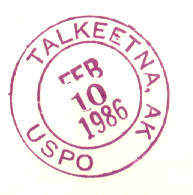“Think back to a book I did in the late 80’s on UUCP – I did it originally as an 80-page pamphlet and I did 10 editions over the next five years, about every 6 months there was a new edition and they were almost entirely driven by user-submitted content. People would say ‘Oh you didn’t cover this-and-this device, and here’s how it works’ and they’d give me 3-4 paragraphs which I’d just drop right into the book. And I think we have a lot more of that ‘book as output of connected conversations’ now, where people are engaged in dialogue…” – Tim O’Reilly
Is it just me, or are we getting to the point where a motivated customer has the ability to dive right in and put his or her own mark on nearly any aspect of nearly any product? Is that what “participating in the conversation” really means? Examples abound from nearly every traditional corporate “department.” (And let’s be clear…this is not just limited to digital goods.)
For someone in marketing, the view may be that customers are beginning to control “the message.” Examples abound.
- There are the sanctioned ConverseGallery ads
- There is the unsanctioned iPod Mini / Tiny Machine ad
- And of course, there are the protest ads
But it’s not just “the message” where this occurs. Customization, from cars to code, is becoming part of the norm. And smart projects, like SpreadFirefox, take advantage of this trend. In addition to the core application, there are now hundreds of extensions (ranging from RSS aggregators to weather forecasts), all user-created and user-submitted. Anything can be tinkered with.
 What’s amazing to me is the number of areas where customers are doing things on their own time, that enable organizations to fill in the gaps of the whole product. Again, examples abound.
What’s amazing to me is the number of areas where customers are doing things on their own time, that enable organizations to fill in the gaps of the whole product. Again, examples abound.
Technorati’s tags needed better explanation? A customer who calls herself “Improbulus” comes up with some contributed documentation.
Think that SocialText needs a better demo of its wiki environment? Customer Raymond Kristiansen has created a fifteen minute customer-generated demo.
Want to create a customized training curriculum? Folks are doing that, too.
Support lacking? We’ve entered a place where customers help each other.
The old model is thus (although the paragraph below is focused on digital media, the thought can be generalized to pretty much anything):
“One image of the copyright consumer is as a passive consumer of copyrighted works as entertainment commodities. Call this the “couch potato” view. Under this view, the copyright consumer is really no different from the consumer of any other good. The consumer is primarily interested in getting access to a wide variety of copyrighted works at reasonable cost. The consumer then consumes these works in a largely passive manner. That is, the consumer reads the book, watches the movie, listens to the CD, and does little more. Consuming books or movies is thus little different from consuming potato chips, bottled water, athletic shoes, or any other consumer product.” – Joseph P. Liu
But that view is slipping away, rapidly, thankfully.
The more open a product (or for that matter, an organization) is, the more customer remixes can occur. And this, as Martha says, is a “good thing.”
Update:
Bonus link: Open-source marketing


 Light blogging this week, ensconced up at 8200′ and all. Recommendations so far:
Light blogging this week, ensconced up at 8200′ and all. Recommendations so far: 
